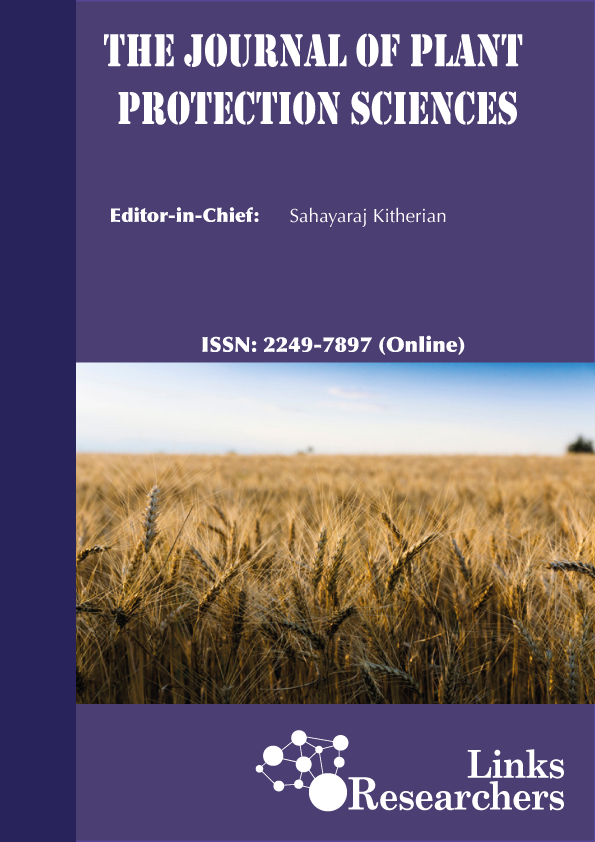P. Barma and S. Jha
Asma Akhtar, Abdul Rehman
Farah Rauf Shakoori, Momina Shokat, Faiza Saleem and Tanzeela Riaz
Nukhbat-Ullah Awan1*, Muhammad Sohail2, Zeeshan Sarwar3, Muhammad Mustahsen Bashir4, Muhammad Abbas Khokhar5 and Asad Aizaz Chatha6
Javed Khan, Ehsan-ul-Haq, Naheed Akhtar, Waseem Ahmad Gillani*, Naila Assad**, M.Asif Masood and Irum Raza*
Asrar Ali*, Ehsan-ul-Haq**, Abdul Rehman***, Javed Khan, Waseem Ahmad Gillani** and Maria Rauf*
Maria Rauf*, Ehsan-ul-Haq**, Javed Khan**, Abdul Rehman***, Waseem Ahmad Gillani* and Asrar Ali**
Javed Khan*, Ehsan-ul-Haq*, Habib Iqbal Javed*, Tariq Mahmood*,
Awais Rasool*, Naheed Akhtar and Saleem Abid**
Tosif Tabassam*, Tariq Sultan**, M.Ehsan Akhtar**, M.Mahmood-ulHassan** and Arshad Ali**
Abdul Rehman Khan*, Muhammad Mahmood–Ul-Hassan**, Rizwan Ahmad** and Anjum Munir ***
Sumera Siddique1,†, Hafiz Abdullah Shakir1, Javed Iqbal Qazi1*, Amtul Bari Tabinda2, Muhammad Irfan1
Munazza Yousra1*, Sair Sarwar1, Muhammad Mahmood Ul Hassan1, Muhammad Zameer khan1, Abdul khaliq2, Shahbaz Ahmad1 and Shamim Ul Sibtain Shah3
Azeem Haider1, Muhammad Mohsin Alam2*, Azhar Ali Khan3 and Muhammad Asif Zulfiqar3
Muhammad Ramzan, Unsar Naeem-Ullah*, Mahreen Hanif, Muhammad Nadeem, Mirza Abdul Qayyum, Muhammad Javaid
Muhammad Rafay1,*, Ghafoor Ahmad1, Tahira Ruby2, Muhammad Abdullah3, Fahad Rasheed4, Muhammad Abid1, Sohail Akhtar5, Zulfiqar Ahmad6 and Riaz Hussain7
Uzma Arif1, Sadar Uddin Siddiqui2, Muhammad Fareed Khan1, Muhammad Arshad3 and Shakeel Ahmad Jatoi2
Inam Ullah1,2, WU Qing-Ming1*, Ruqia Bibi2 and Najam Un Nisa2
Salma Javed and Samreen Khan*
Samra Aftab1, Saleem Ullah1 and Farida Anjum2*
Moheem Khan1, Arif Ali1*, Shafique Ahmed Memon1, Taimoor Khan Qambrani2, Ghulam Khaliq3, Jahanzaib Khan1, Saghir Ahmed1, Azmat Hussain Abro4 and Sohail Azeem Baloch1
Salma Javed1* and Daniyal Siddiq2
Syeda Shazia Bokhari, Aisha Waheed Qurashi*, Roheela Yasmeen*, Fouzia Yasmeen, Nabeela Nayab, Uzma Rafi
Najeeb Ullah1*, Muhammad Nadeem2, Malik Mujaddad-ur-Rehman1, Rubina Nelofer2 and Yasir Arfat3
Sadarman1, Agung Irawan2, Muhammad Ridla3, Anuraga Jayanegara3*, Nahrowi3, Roni Ridwan4, Ahmad Sofyan5, Hendra Herdian5, I Nyoman Guna Darma5, Teguh Wahyono6, Dewi Febrina1, Rakhmad Perkasa Harahap7, Rizki Amalia Nurfitriani8, Danung Nur Adli9
Fei Shang and Pengfei Liu*
Semra Okur Gumusova1, Gul Fatma Yarim2, Cuneyt Tamer1,*, Ayris Salt2 and Gokhan Inat3
El-Kholy KH1*, Tag El-Din H1, Seham NE Seleem1, Eman Hussein2 AM El-Shhat2
Sania Subhan Qureshi*,1, Baitullah Khan1, Shahid Khan1, Hanif Ur Rahman1 and Muhammad Subhan Qureshi2
Soliman Mohammed Soliman1*, Mohsen Mahmoud Shoukry2, Ahmed Mohammed El-Okazy1, Ahmed Mahmoud El-Morsy1, Mahmoud Mohammed Soliman1
Syeda Rubab Zaidi* and Safdar Ali Mirza
Waleed Asghar1,2*, Ahmad Mahmood1, Farhan Iftikhar2,3, Bushra Ahmad4, Rehmat Ullah5, Muhammad Bilal5, Abdul Latif6*, Muhammad Arsalan6, Madeeha Khan6, Rizwan Latif7 Muhammad Ehsan7
Ahmed Abd El-Salam1*, Yasser Hamouda1, Salah El-Safty2, Ahmed El-Attar2
Jin-Ming Zhao1,2, Yun Fang2 and Yue-Hua Sun2*
Farhana Binte Zalal, Prodip Kumar Sarkar*, Mahbuba Sultana, M H Kawsar, Swapon Kumar Fouzder
Muhammad Furqan1*, Zulfiqar Ali1, Muhammad Mudassar Shahzad2, Rida Ahmad1, Haqnawaz Yousaf3 and Imad Ul Din Zangi4
Rahmat Ullah Khan1*, Karim Gabol1, Asif Sadam2, Waheed Ali Panhwar3, Hamidullah4 and Abdul Rahim1
Shabana Memon1*, Aamir Ali Abro1, Muhammad Iqbal Jakhro2, Aqsa Farid3, Maliha Habib4, Maqbool Ahmed5, Liaquat Ali Bhutto6, Saba Ambreen Memon7 and Muhammad Farooq8*













